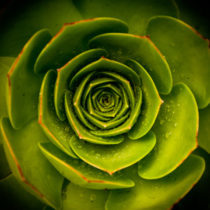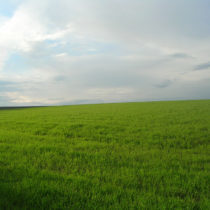Landscape Architecture for Landscape Architects › Forums › TECHNOLOGY › Recommendations for Photoshop Rendering File Sizes?
- This topic has 1 reply, 10 voices, and was last updated 11 years, 7 months ago by
 Calico.
Calico.
-
AuthorPosts
-
April 2, 2014 at 4:10 pm #152861
 CarlaParticipant
CarlaParticipantI’m working on a Photoshop Rendering that’s 30×42 and full color across the entire board for a Landscape Concept Plan. There are many layers for background color, lots, trees, etc. The file is so large (313,367KB) that it’s becoming unworkable as Photoshop and the PC memory is unable to handle it and it keeps crashing. It’s a pdf file and not a psd at 300dpi for print quality. I do save a copy and flatten the layers which helps somewhat but I need a file that I can edit as changes come in the future. Does anyone have a suggestion for this problem? Is there a better program to use for large color renderings for Landscape Plans that I can try on the next project?
I appreciate hearing any suggestions and experience you all may have had in this situation.
April 3, 2014 at 4:52 pm #152872 CalicoParticipant
CalicoParticipantI use Photoshop for renderings. Here are my two cents that might save you some time.
- Save your working file with the .psd extension. Creating the .pdf extension directly from within Photoshop is unstable on larger projects, leading to errors, data loss, huge file sizes and overall anarchy.
- Confirm that you really need 300 dpi, especially if you are using an older computer system with memory issues. Never forget that your rendering illustrates design intent; it’s not fine art. While printers can go way higher, you’ll find that 144 dpi is good enough for most presentations, particularly at 30″ x 42″ when your audience is a few feet away. If your audience will be 6″ from your board, 300 dpi is great. Use 300 dpi or 600 dpi for smaller hand-outs.
- When you are ready to print from Photoshop, save your work (assuming you may want to edit it again), then flatten the image and save the file with a different name. Most plot drivers can’t cope with more than a few layers in a large file, but can handle the same information when flattened.
- The default print density in pdf drivers recently is 1200 dpi, which is extreme overkill. Make sure you set the resolution where you want it before you print to pdf. If I forget to do this – and I have a pretty sweet system – Photoshop will crash just to remind me that I forgot to set the resolution before printing.
Good luck!
April 3, 2014 at 6:35 pm #152871 Jonathan P. Williams, RLAParticipant
Jonathan P. Williams, RLAParticipantI agree with Calico on the pdf format. It is not stable and creates funny issues across platforms.
April 3, 2014 at 7:14 pm #152870 Akin AdekileParticipant
Akin AdekileParticipantDrop it down to 150 dpi….possibly less. The bigger the board the less dpi you can get away with it. As long as the long side of document is atleast 6000 pixels, your good to go. At 150 dpi your pixel size is 4500×6300 pixels. This should be fine. The more layers and layer blend modes your using, the heavier things get. So do try and keep that at a minimum.
April 3, 2014 at 7:52 pm #152869 Daniel Miller | RLA, LEED APParticipant
Daniel Miller | RLA, LEED APParticipantTo keep file sizes down in PSD renderings I’ll group like items (trees and shrubs, furnishings, etc.) in folders and then export them to other files, which i then close and import back in later — keeping only a flattened version of the trees in my working file, to compress file size.
To accurately import/export files to and from your file (without having to move, nudge around, etc.) just right click your layer or group, go to “Duplicate Layer” and then change the “Document:” to “New”. Photoshop will export (and later re-import) your working files to and from your files in the exact same location.
Hopefully that made some sense…
April 3, 2014 at 7:57 pm #152868 Steve JinksParticipant
Steve JinksParticipantI work in 30×42 in Photoshop as well and keep the res to 200 for optimum print quality and file ‘manageability. But you could easily lower the resolution to around 150 to reduce file size.
In terms of performance, if you can, upgrade your RAM to at least 32mb (preferably more), I would make that the first choice to boost some of the PCs ability to handle large files. Some of mine get upward of 1gb unflattened which is just a fact of working in PSD.
Also, large graphics files are best handled by high performing video/graphics cards. Look into upgrading your video card for another good kick in performance.
Defintely work in native PSD until you are ready to print. You’ll save the overhead of having PS re-interepret the format while working.
April 4, 2014 at 1:12 am #152867 Thomas J. JohnsonParticipant
Thomas J. JohnsonParticipantAlternately, make your canvas size a lot smaller, then when you’re done, use illustrator to vectorize the finished rendering and you can make it as big as you want without becoming pixelated.
April 4, 2014 at 7:20 am #152866 Walter Bone, RLAParticipant
Walter Bone, RLAParticipantI am by no means an expert, but I have found minimizing layers by copying symbols, etc reduces layer quantities, such as trees, vehicles and so on.
There may be a possibility of creating smaller vignettes and insert pieces (like a puzzle) of the overall instead of rendering and texturing each minute detail. Insert the images to create a larger masterpiece. This too can reduce overall mb.
Good luck.
April 4, 2014 at 5:26 pm #152865 CarlaParticipant
CarlaParticipantThanks everyone for your advice. I’m sure this will help.
April 13, 2014 at 7:17 am #152864 idaParticipant
idaParticipant300 mb is quite small in my opinion. My files sometimes reach above 1gb (I use a lot of masks and layers. But I have the proper machine for it and it can handle it quite well with little lag. Your computer crashes probably because something is overheating. Download a temerature monitor program (they’re free) for your computer and see if anything reaches above 70 degress celcius. If it’s slow, then upgrade, if it crashes then find a way to cool your system. The heat can also cause your computer to preform slower. If you can’t do any of that, then do what others have said and reduce your dpi and layers in PS 🙂
April 22, 2014 at 5:43 pm #152863 Goustan BODINParticipant
Goustan BODINParticipantI quite disagree with the ‘machine intensive’ comments : you do *not* need to work at such an accuracy that you need an NSA super-calculator to do your renderings. This will cost you an arm in Hardware investments for no purpose.
Like others said, keep you layer number down, blending and masking to what is required, 150dpi and you’ll be just fine, with a nice looking rendering.
April 23, 2014 at 6:03 am #152862 idaParticipant
idaParticipantThe machine I use for PS is only an i3, 32-bit system with only 2gb ram, and a lousy GTS450 graphics card, but it doesn’t crash and it can handle the large 1gb+ PS files well. My machine doesn’t crash because it’s properly cooled and has the right amount wattage. So yes I agree with you, you don’t need a super computer, you just need a well built machine.
-
AuthorPosts
- You must be logged in to reply to this topic.


